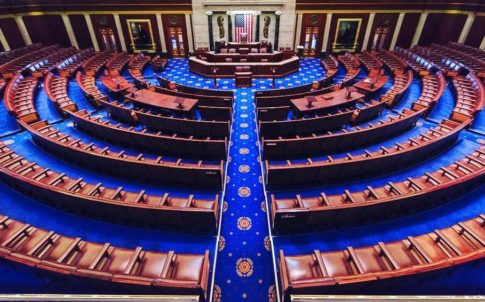What comes next with the 2020 Census?

The 2020 Census data collection officially ended on October 15th. In a typical year, we would expect to receive apportionment counts for the U.S. House of Representatives by December 31st and the redistricting data would be delivered by March 31, 2021. This is not a typical year: we still do not know when 2020 Census data will be released.
While we wait to find out more details on the 2020 Census release schedule, here’s what we do know about the 2020 Census and other U.S. Census Bureau data products.
How many North Carolina households self-responded to the 2020 Census?
When the 2020 Census data collection officially ended in on October 15th, 63.4% of North Carolina households had self-responded to the census, meaning they filled out the form on their own without a visit from a census worker. This was below the statewide self-response rate of 64.8% in 2010 and below the national average of 67%.
Within North Carolina, 32 of the state’s 100 counties exceeded their 2010 self-response rates.
The remainder of North Carolina’s households were counted during non-response followup (NRFU). These households could have been counted in several ways, including direct interviews, proxy respondents, and statistical imputation, a set of techniques to account for missing or incomplete data.
Which communities did not self-respond to the 2020 Census?
Self-response rates lagged in traditionally hard-to-count communities. Across North Carolina, self-response rate was lower in tracts with:
Lower self-response rates mean that these communities needed more counting NRFU than other communities. NRFU has a higher risk of undercount than self-response, which means that North Carolina’s traditionally hard-to-count communities are more likely to face a risk of undercount in the 2020 Census.
How can I understand the quality of the 2020 Census?
Self-response rates were a great metric to track progress in counting North Carolina households, but they are now limited in what they can tell us. Here are some of the metrics we will look at to understand participation and quality of the 2020 Census:
These data will come after the 2020 Census data is released.
What other data products can help me understand population change?
The U.S. Census Bureau has two data releases during December 2020 that can help us understand population change (these are not census counts):
Need help understanding population change and its impacts on your community or business? Carolina Demography offers demographic research tailored to your needs.
Contact us today for a free initial consultation.
Contact UsCategories: Census 2020
Tags: apportionment, redistricting

The Center for Women’s Health Research (CWHR) at the University of North Carolina School of Medicine released the 12th edition of our North Carolina Women’s Health Report Card on May 9, 2022. This document is a progress report on the…

Dr. Krista Perreira is a health economist who studies disparities in health, education, and economic well-being. In collaboration with the Urban Institute, she recently co-led a study funded by the Kate B. Reynolds Foundation to study barriers to access to…

Our material helped the NC Local News Lab Fund better understand and then prioritize their funding to better serve existing and future grant recipients in North Carolina. The North Carolina Local News Lab Fund was established in 2017 to strengthen…
Your support is critical to our mission of measuring, understanding, and predicting population change and its impact. Donate to Carolina Demography today.